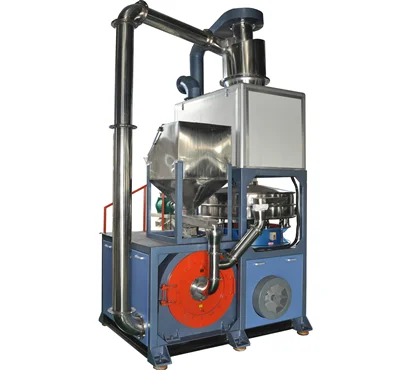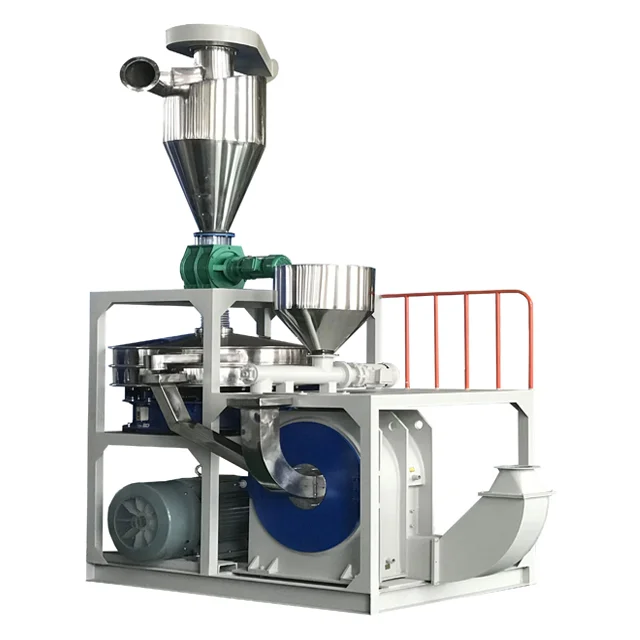Plastic waste everywhere, mountains of rejected plastic parts, and manufacturers scrambling to cut down costs without cutting corners. Sound familiar? That’s exactly the problem I see every day. Cities, factories, and even small workshops are suffocating under plastic scraps they don’t know how to handle. But here’s the good news: plastic pulverizers are stepping in as the silent heroes of modern recycling. And trust me, I’ve built my business around them for a reason.
A plastic pulverizer is a machine that grinds plastic materials—like PVC, PE, PP, or ABS—into fine powder or granules for reuse in manufacturing processes.
It reduces waste, improves recycling efficiency, and transforms bulky plastic waste into valuable resources that can be remolded or repurposed.
Still here? Great. Because if you’re wondering whether you need a pulverizer or just another shiny machine to collect dust, let me walk you through the real deal.

Why should I care about plastic pulverizers?
Simple. Because plastic pulverizers are the backbone of efficient recycling and sustainable manufacturing.
Think about it. Every factory producing plastic parts also creates a lot of scrap—edges, miscasts, leftover sprues. Without a proper system, all of that goes straight into the trash. Now multiply that across thousands of plants globally. It’s a massive problem.
Pulverizers turn those leftovers into usable powder—sometimes as fine as 300 microns. That powder goes back into production, slashing costs and reducing the need for virgin plastic. It’s a win-win.
How does a plastic pulverizer work?
Ah, the juicy mechanical stuff. Here’s the magic.
Inside the pulverizer, there’s a high-speed rotating disc or blade system. When plastic material enters, it’s ground against a fixed disc or wall at high velocity. The friction, heat, and impact shatter the plastic into smaller particles. Then, a mesh screen filters the output so only powder of the right size gets through.
There are different types: disc pulverizers, turbo pulverizers, and cryogenic pulverizers (for heat-sensitive plastics). Each has its own flavor, depending on what kind of plastic you’re dealing with.
What kinds of plastics can be pulverized?
Oh, the variety! In our Amige facility, we’ve processed everything from rigid PVC pipes to soft polyethylene films.
Here’s a quick cheat sheet:
- PVC: The most common one. Pulverizes beautifully.
- HDPE & LDPE: A bit tricky due to their low melting points.
- PP & ABS: Popular in automotive and electronics—easy targets.
- PET & PC: Usually require cryogenic methods to avoid melting.
Some high-performance plastics need special treatment. But with the right setup, you’d be surprised what you can grind down.

What are the benefits of using a pulverizer?
Let me count the ways—because there are many.
- Material recovery: Don’t toss scraps. Pulverize and reuse. Simple as that.
- Cost savings: Virgin plastic prices fluctuate. Pulverized material = stable, cheap feedstock.
- Waste reduction: Less landfill, more sustainability.
- Smaller footprint: Powder takes up way less space than chunks or sheets.
- Improved product consistency: Powder mixes better in molding or extrusion.
We’ve had clients save thousands monthly after installing our machines. That’s not just ROI—it’s smart manufacturing.
Is a pulverizer the same as a shredder?
Nope. Different beasts for different jobs.
A shredder tears plastic into chunks or strips—ideal as a first step.
A pulverizer takes those chunks and turns them into powder. It’s the refinement stage.
Think of shredders as axes and pulverizers as sanders. You start rough, then finish fine. In many workflows, we pair both: shred first, pulverize second.
Who needs a plastic pulverizer?
If you’re in:
- Plastic manufacturing
- Injection molding
- Extrusion
- Recycling facilities
- Waste management
…then yes, you absolutely do.
Even small businesses benefit. We’ve sold compact models to niche recyclers, 3D printing firms, and even universities for research purposes. One of our customers pulverizes failed 3D prints into reusable filament base powder!
How do I choose the right pulverizer?
This part is crucial.
Look at:
- Material type: Some plastics need slower speeds or cooling.
- Output size needed: Fine powder? Coarse granules?
- Throughput rate: How much do you need per hour?
- Cooling system: Air-cooled vs. water-cooled vs. cryogenic.
- Maintenance: Easy blade changes save headaches later.
At Amige, we help clients customize setups depending on their needs. No one-size-fits-all. A small bottle recycler won’t need the same rig as a pipe factory.

Are there any challenges or limitations?
Sure, nothing’s perfect.
- Heat generation can deform plastic during grinding.
- Blade wear is an ongoing cost.
- Noise and dust need managing (our machines come with dust collectors).
- Power consumption can spike depending on materials.
But these issues are manageable with smart design and good maintenance.
Can pulverizers help with sustainability goals?
Absolutely. This is where my heart is.
Pulverizers enable closed-loop recycling. Instead of dumping scraps, you reintroduce them into production. That means less virgin plastic, less landfill, and a cleaner planet.
Some cities are even integrating pulverizers into municipal waste systems to prep plastics for downstream recycling. It’s not just good business—it’s the future.
What innovations are coming in pulverizer tech?
Oh, the future is spicy.
We’re seeing:
- Smart sensors for real-time blade condition monitoring.
- AI-driven load balancing to optimize energy use.
- Modular designs for quick swaps and repairs.
- Hybrid machines that can shred and pulverize in one unit.
At Amige, we’re already prototyping a next-gen pulverizer with IoT integration. Imagine a machine that not only grinds but self-diagnoses. That’s the dream. And it’s not far off.

Conclusion
A plastic pulverizer is more than a machine—it’s a productivity multiplier and a green champion. If you’re in plastics and not pulverizing yet, you’re leaving money (and material) on the table.
